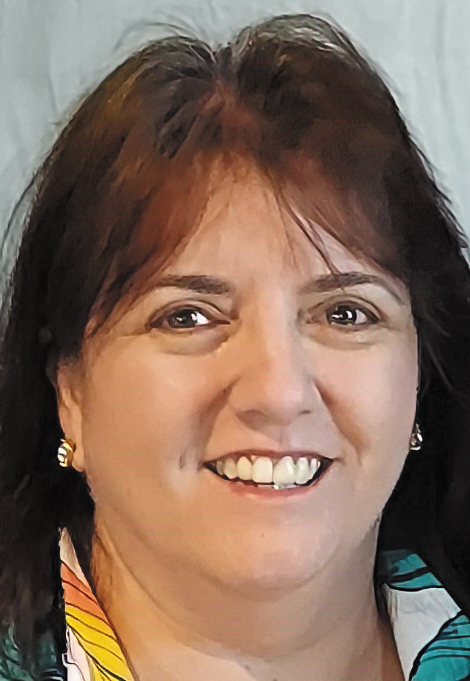Fit to Lead: January 2024

School leaders deal with a wide variety of issues every day, but one area they usually aren’t trained in is conducting investigations involving student misconduct. If two students are both looking you straight in the eye and one is saying, “Yes, this happened,” and the other is saying, “No, it didn’t,” how do you decide who is telling the truth?
Without training, school leaders sort of learn as they go, which isn’t the best approach. I was a trial lawyer for more than a decade, with extensive experience taking depositions, and I now use that experience to teach school leaders how to conduct investigations.
I’m in New Jersey, where the need to conduct student investigations dramatically increased with the enactment of our 2011 Anti-Bullying Bill of Rights Act. Administrators—often assistant principals—are called upon to investigate incidents regarding a range of situations, including bullying, discrimination, physical altercations, social media activity, and parents’ allegations of inappropriate behavior by other students. I’ve learned that this sort of training is needed across the country. At NASSP’s annual conference in July, I presented a workshop on the first day discussing student investigations. Because of the early time slot, I expected just a handful of people; I ended up with approximately 60 attendees.
In this article, I share some of that workshop content, along with other training I do, to offer some suggestions on conducting student investigations, and especially interviewing techniques. These are best practices and are not to be considered legal advice. For that, consult with your school board and/or personal attorney.
Sources of Evidence

It’s good to start an investigation by determining applicable district policies and legal standards. Then you need to strategize about where and how to find information that answers the following questions: Who is involved? What happened? Where did it happen? Was it a one-time event or a series of incidents? When did it occur? Is the allegation reasonable? Can you determine the motivation for the incident?
Sources of evidence include the following:
- Documentary evidence, such as emails, notes, journals, diaries, computer files, cell phone records, texts, incident report forms, student files (of the complainant, the accused, and possibly witnesses), and prior investigation files.
- Technological evidence, such as surveillance/hallway camera footage, social media pages and posts, voicemails, and other recordings.
If possible, it may also be helpful to view the location of the alleged incident, which can help determine if the incident could have happened in the manner it was described.
School officials must follow the applicable search and seizure requirements and limitations outlined in the Fourth Amendment of the U.S. Constitution, school district policies, and their state law. You should also be aware of your district’s information technology policies regarding the use of internet services and electronic devices. In some places, people who use the district’s internet server do not have an “expectation of privacy,” and an administrator may ask to see any, and all, activity on the server, without needing the consent of the parties involved.
Written statements and interviews are two key investigative tools. I’ve compiled some best practices for both.
Written Statements
Whenever possible, you should attempt to obtain a written statement from anyone you will question, prior to the actual interview. When the student enters your office, provide them with a pen and piece of paper, and ask them to write down everything that happened to them the day of the incident. If they make a mistake, tell them to cross out and correct the mistake—don’t give them a new piece of paper. Don’t edit the student’s statement—you want this description of events to be in the student’s voice. If English is not the student’s first language, allow them to write their statement in whatever language they prefer, and then have it translated. If you are working with a student with special needs, be sure to accommodate their needs as identified in their IEP and inform any assisting staff of the confidentiality requirements of participating in the investigative process.
There are several reasons why, when feasible, it is a best practice to get a written statement before the interview:
- Since the student is providing a narrative of the incident before you have asked any questions, the student can’t try to “figure out” what you may, or may not, already know.
- If a parent claims the student was coerced into making a statement, the school district will be able to argue that the student provided their version of events before being asked anything by the investigator.
- You have the potential to judge the student’s credibility. If a person is making up a story, they will try to figure out what the interviewer will believe. Many cross-outs in a statement may be an indication that the writer is making up the story as they go along.
- Since you have asked about the entire day, you may learn about events that occurred before the actual incident that were the catalyst for the incident, and any events that happened later in the day.
- If the student provides a detailed narrative about parts of the day that have nothing to do with the relevant incident, but then provides a more succinct accounting of the actual incident, it is likely the student has more information than what was included in the statement. In these situations, the student has demonstrated their ability to be descriptive when they choose—and they have chosen to be less than forthcoming about the actual incident.
- If the parent provides a “new” written statement, you can compare and contrast the differences between the two statements.
- When you begin the actual interview, you now have an outline of events from the student. If the student deviates from what they wrote in their statement when answering questions, this may be an indication of a lack of truthfulness.
Interviews
- Start with a “warm-up.” During the initial interview, it is a best practice to begin a conversation with the student by asking them questions you either already know the answers to (such as their name, grade, sports teams, etc.), or that it would be easy for the witness to tell the truth about and have nothing to do with the incident that is the focus of the investigation. This allows you to create a more comfortable conversational atmosphere, rather than a harsh interrogation, and it is another tool by which to judge the student’s credibility.
- By asking innocuous questions in the beginning, you can develop a baseline knowledge about how the student answers questions truthfully. If the student answers the beginning questions quickly and without hesitation, but then delays, stalls, or is otherwise evasive when the important topics are discussed, it is likely the student is being deceptive or otherwise withholding information. On the other hand, if the student is visibly nervous and hesitant when answering basic questions in the beginning, and is that way throughout the interview, their behavior is most likely not an indication of a lack of veracity.
- After the warm-up, your initial questions should be open ended, which should generate a narrative answer you can compare to the written statement. Once the student has given an overview of events, begin asking specific questions and follow-up questions to clarify responses. When you encounter a situation where multiple witnesses appear to have an identical, seemingly rehearsed, narrative of events, ask them to repeat their stories from different starting points. If the witnesses are being truthful, their recounting of events will be consistent, regardless of where they begin the story. People rehearse stories front to back, and they rarely are prepared to tell the story in any other manner.
- Silence is golden. Most people are uncomfortable with complete silence during an interview, and witnesses often want to fill the silence. If a student hesitates when answering a question, remain silent while maintaining eye contact and see if the student will break the silence with an answer. At the end of your interview, look through your notes without saying anything, and see if the student decides to provide you with additional information because the silence is too awkward for them.
Readers are encouraged to share these strategies with their colleagues, and to work collaboratively to develop their own template of best investigation practices that could be available to all school leaders in their district.
Sandra L. Jacques, Esq., LL.M., is the assistant director of legal education for the Foundation of Educational Administration, Inc., which is the professional learning division of the New Jersey Principals and Supervisors Association. She is also an adjunct professor at Ramapo College of New Jersey and at New Jersey City University.
